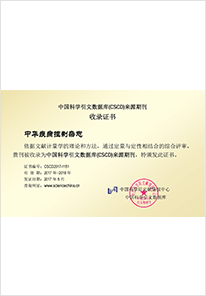2019 Vol. 23, No. 8
Display Method:
2019, 23(8): 885-889.
doi: 10.16462/j.cnki.zhjbkz.2019.08.001
Abstract:
2019, 23(8): 890-893, 898.
doi: 10.16462/j.cnki.zhjbkz.2019.08.002
Abstract:
2019, 23(8): 894-898.
doi: 10.16462/j.cnki.zhjbkz.2019.08.003
Abstract:
2019, 23(8): 899-903.
doi: 10.16462/j.cnki.zhjbkz.2019.08.004
Abstract:
2019, 23(8): 904-910.
doi: 10.16462/j.cnki.zhjbkz.2019.08.005
Abstract:
2019, 23(8): 911-915, 937.
doi: 10.16462/j.cnki.zhjbkz.2019.08.006
Abstract:
2019, 23(8): 916-921.
doi: 10.16462/j.cnki.zhjbkz.2019.08.007
Abstract:
2019, 23(8): 922-926, 931.
doi: 10.16462/j.cnki.zhjbkz.2019.08.008
Abstract:
2019, 23(8): 987-991.
doi: 10.16462/j.cnki.zhjbkz.2019.08.020
Abstract:
2019, 23(8): 992-997.
doi: 10.16462/j.cnki.zhjbkz.2019.08.021
Abstract:
2019, 23(8): 998-1002.
doi: 10.16462/j.cnki.zhjbkz.2019.08.022
Abstract:
2019, 23(8): 1003-1007.
doi: 10.16462/j.cnki.zhjbkz.2019.08.023
Abstract:
2019, 23(8): 932-937.
doi: 10.16462/j.cnki.zhjbkz.2019.08.010
Abstract:
2019, 23(8): 938-944.
doi: 10.16462/j.cnki.zhjbkz.2019.08.011
Abstract:
2019, 23(8): 945-950.
doi: 10.16462/j.cnki.zhjbkz.2019.08.012
Abstract:
2019, 23(8): 951-955, 976.
doi: 10.16462/j.cnki.zhjbkz.2019.08.013
Abstract:
2019, 23(8): 956-960.
doi: 10.16462/j.cnki.zhjbkz.2019.08.014
Abstract:
2019, 23(8): 961-965.
doi: 10.16462/j.cnki.zhjbkz.2019.08.015
Abstract:
2019, 23(8): 971-976.
doi: 10.16462/j.cnki.zhjbkz.2019.08.017
Abstract:
2019, 23(8): 977-980, 1007.
doi: 10.16462/j.cnki.zhjbkz.2019.08.018
Abstract:
2019, 23(8): 966-970.
doi: 10.16462/j.cnki.zhjbkz.2019.08.016
Abstract:
2019, 23(8): 1013-1016.
doi: 10.16462/j.cnki.zhjbkz.2019.08.025
Abstract:
2019, 23(8): 1017-1020.
doi: 10.16462/j.cnki.zhjbkz.2019.08.026
Abstract:
2019, 23(8): 1021-1024.
doi: 10.16462/j.cnki.zhjbkz.2019.08.027
Abstract:


 Email alert
Email alert RSS
RSS Abstract
Abstract HTML
HTML PDF
PDF





